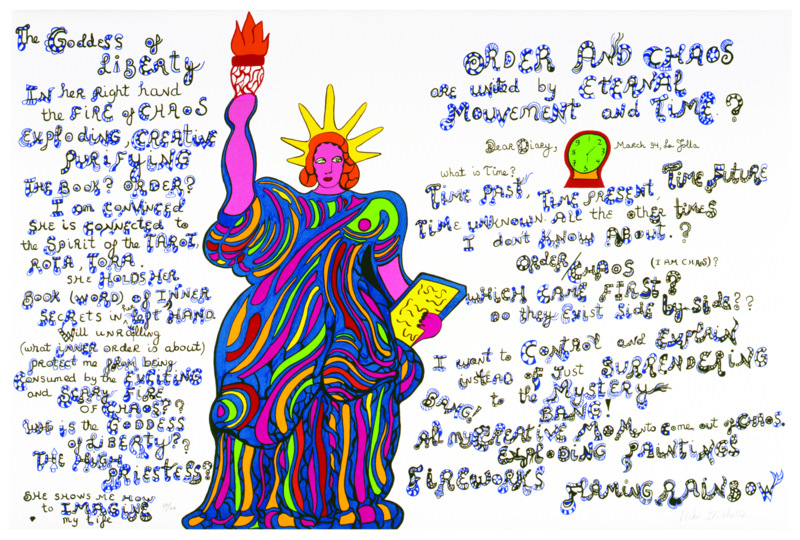niki de saint phalle
︎Artist, Sculpture, Illustration, Article
︎ Ventral Is Golden
niki de saint phalle
︎Artist, Sculpture, Illustration, Article
︎ Ventral Is Golden
︎ Ventral Is Golden
"I love the round, the curves, the undulation. The world is round, the world is a breast."
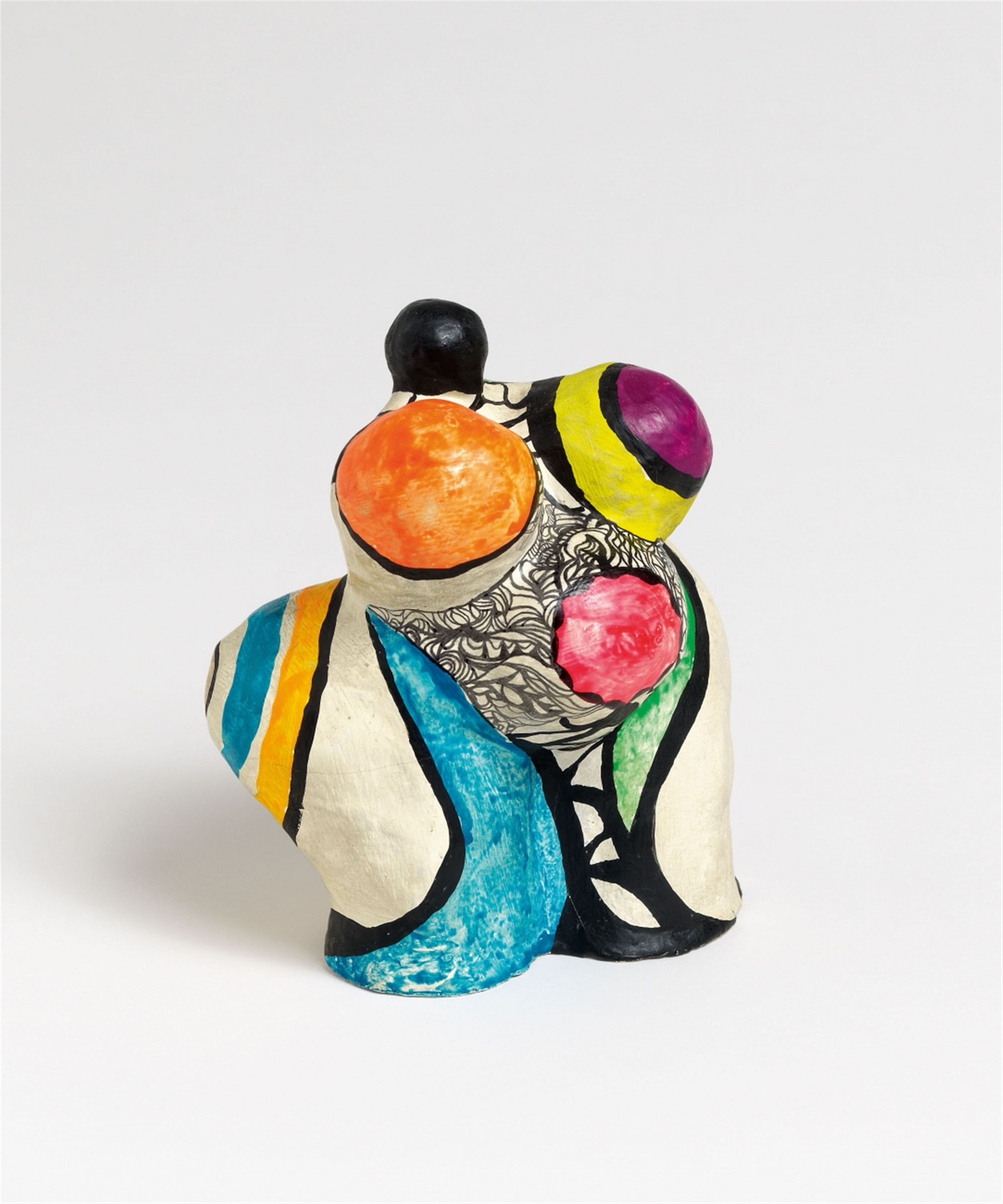
Born near Paris, raised in New York and having worked predominantly in Switzerland, Italy and California, Niki De Saint Phalle (1930 - 2002) became an impassioned creator drawing from many disciplines and cultures and also transforming the raw materials of her traumatic childhood into provokingly tender works, bulging with animism and feminine energy.
Having experienced that the assigned ‘world of the woman’ was too repressive and restrictive, Saint Phalle’s journey later became associated with the Nouveau Realists - a movement which sought to bring art and the wolrd closer together into the single, unitary consciouness from which they emerged. Saint Phalle produced an eclectic array of works during this period, ranging from drawing, collage, graphic design, film, Tirs (’shooting’ paintings) and sculpture. In addition, her Tirs were considered one of the earliest exmaples of Performance Art. Alongside these Shooting Paintings, “Happenings, Fluxus, and performance (of the 1960’s) sought a discursive, interactive relationship between artist and spectator; new conceptual frameworks emerged, informed by gender awareness. Female artists began to intervene directly in male-defined social and political spheres, articulating frustration at the injustices of domination.”
![]()
Having experienced that the assigned ‘world of the woman’ was too repressive and restrictive, Saint Phalle’s journey later became associated with the Nouveau Realists - a movement which sought to bring art and the wolrd closer together into the single, unitary consciouness from which they emerged. Saint Phalle produced an eclectic array of works during this period, ranging from drawing, collage, graphic design, film, Tirs (’shooting’ paintings) and sculpture. In addition, her Tirs were considered one of the earliest exmaples of Performance Art. Alongside these Shooting Paintings, “Happenings, Fluxus, and performance (of the 1960’s) sought a discursive, interactive relationship between artist and spectator; new conceptual frameworks emerged, informed by gender awareness. Female artists began to intervene directly in male-defined social and political spheres, articulating frustration at the injustices of domination.”
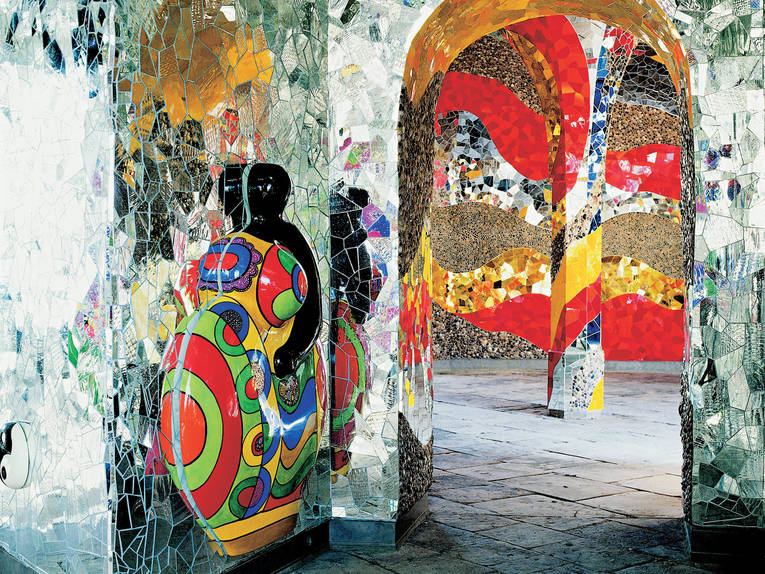


Saint Phalle also designed a version of her own Tarot deck that would spill into the physical realms akin to Gaudi’s Parc Guell in Barcelona, and the Watts Towers by Simon Rodia in LA in terms of scope and surrealism.
Saint Phalle’s tarot deck designs served as the basis for her baroque influenced ‘Tarot Garden’ which showcased her drawings as immersive and voluptuous, phantasmagoric buildings that burst through the rural landscape of south Tuscany. Here the tarot can be experienced in its true sense - as a physical domain where the psyche can pass through a series of spiritual developments.
Initially with help from her husband, Swiss artist, Jean Tinguely, the first structure to rise up through the forest was the Empress, where Saint Phalle would live inside until the garden was completed.
Additionally, having worked with assistants for fifteen years to create the garden, Saint Phalle was able to utilise the traditional mosaic aesthetics of regional Italian artisans.
Initially with help from her husband, Swiss artist, Jean Tinguely, the first structure to rise up through the forest was the Empress, where Saint Phalle would live inside until the garden was completed.
Additionally, having worked with assistants for fifteen years to create the garden, Saint Phalle was able to utilise the traditional mosaic aesthetics of regional Italian artisans.

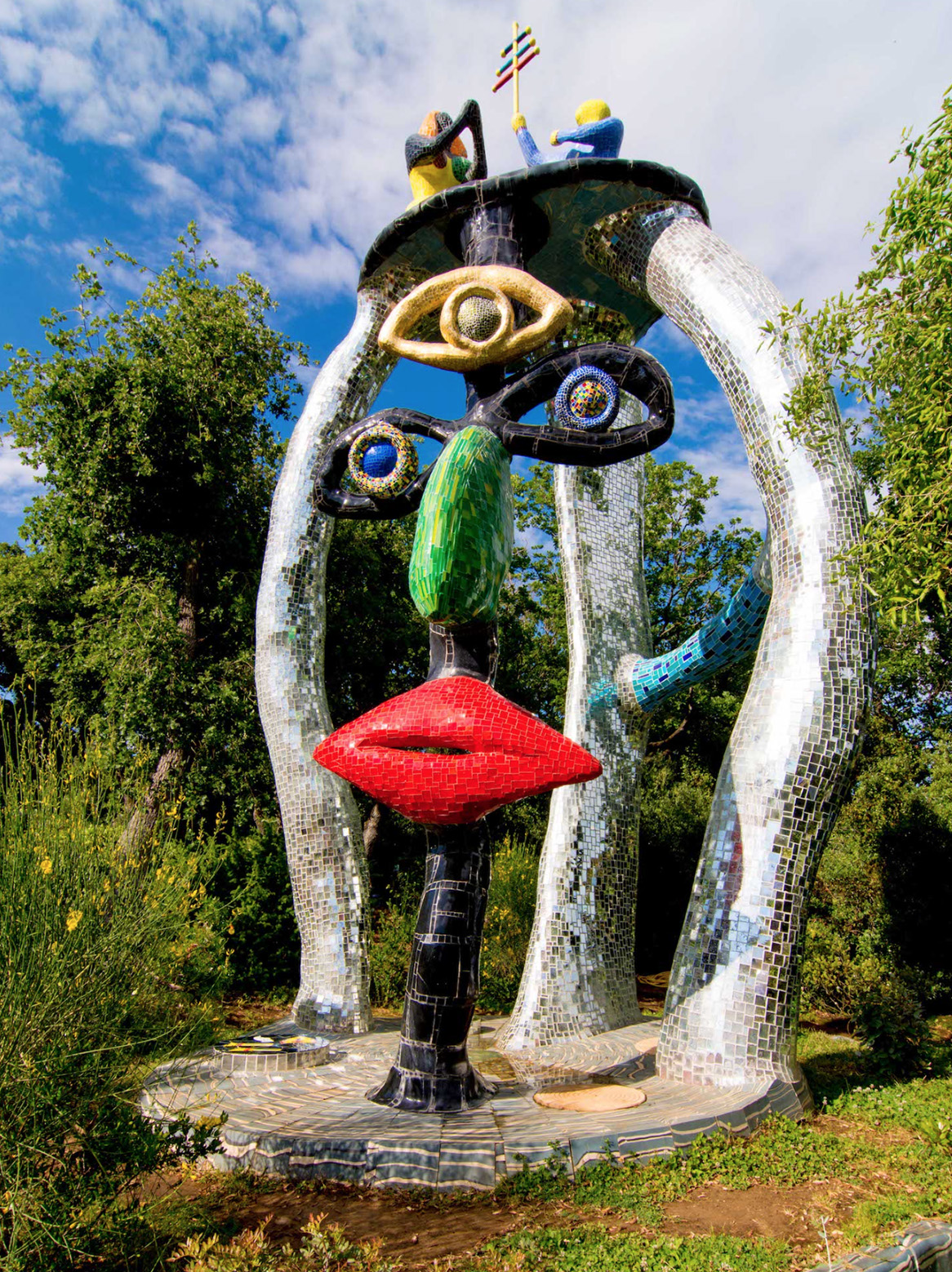

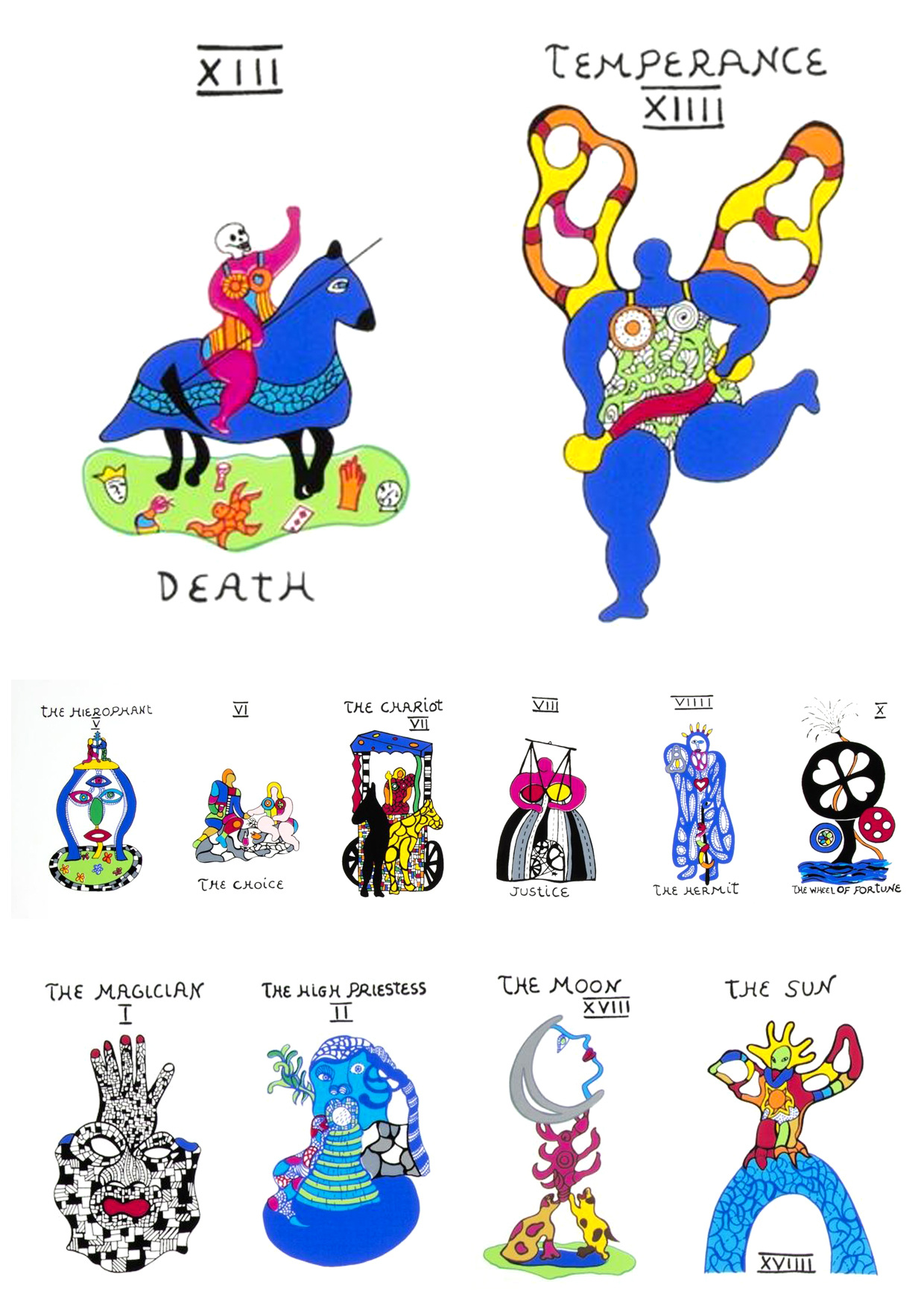
Her most iconic sculptures, known as the Nanas (loosely related to the derogatory french term for ‘broad’) swept across domains of the absurd, the playful and the provocative, growing symbolically to represent the neglected aspects of female roles within a wider political and social context from the 1960’s onwards.
“(The Nanas) reflect the new vision of womanhood that appeared in the 1960s: strong images of femininity and of a triumphant maternity. In 1974, the Nanas became a feature of public space for the first time with the commissioning of three giant Nanas by the city of Hanover, Germany. Furthermore, La Grande Tempérance and L'Ange Protecteur [Guardian Angel] have been watching over the inhabitants of the city of Luxembourg and travellers at Zurich's main station respectively since the mid-90s.”
“(The Nanas) reflect the new vision of womanhood that appeared in the 1960s: strong images of femininity and of a triumphant maternity. In 1974, the Nanas became a feature of public space for the first time with the commissioning of three giant Nanas by the city of Hanover, Germany. Furthermore, La Grande Tempérance and L'Ange Protecteur [Guardian Angel] have been watching over the inhabitants of the city of Luxembourg and travellers at Zurich's main station respectively since the mid-90s.”
"Tell them I identify with the Nanas. They are messages of joy, which is what I hope will bring us back to warmth and peace.“




